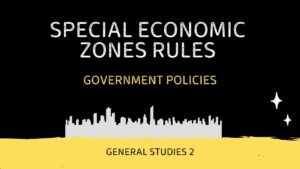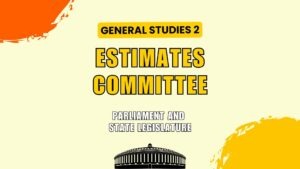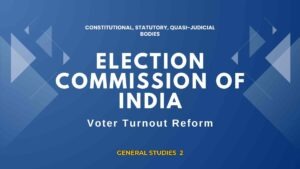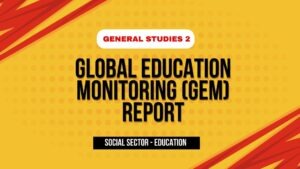UNESCO Global Education Monitoring (GEM) Report
UNESCO Global Education Monitoring (GEM) Report
🔷 In News
The UNESCO GEM Report 2024–25 evaluates global education systems with a focus on learning outcomes, gender equity, and school leadership. It underscores India’s systemic issues in foundational literacy, leadership gaps, and poor policy implementation, despite high enrolment rates.
🔶 Key Findings – India and Global Trends
1. 📉 Enrolment vs Learning Outcomes (India)
>95% primary enrolment in India.
But foundational learning crisis persists:
ASER 2023: Only 43% of Class 3 students can read a Class 2-level text.
NAS 2021: Only 25% Class 8 students are proficient in mathematics.
2. ⚖️ Gender Disparities
Reading Proficiency:
Globally, 87 boys per 100 girls reach minimum reading proficiency.
In middle-income countries, it drops to 72 boys per 100 girls.
Math Proficiency Reversal (Post-COVID):
Girls now underperform in math in countries like Brazil, UK, and Italy, reversing pre-pandemic gains.
3. 👩🏫 Women in Teaching vs Leadership (India)
60% of elementary teachers in India are women.
But only 13% of vice-chancellors in central universities are women (as of 2022).
Globally, only 19% of education ministers are women.
4. ⚠️ Leadership Deficits
Many Indian states lack formal principal training, despite NEP 2020‘s mandate of 50 hours/year of professional development.
Globally, <50% of countries require leadership training for headteachers.
5. 📊 Link Between Leadership and Learning
African case studies show female-led schools had up to 1 year of additional learning outcomes.
Delhi’s middle leadership pilot demonstrated increased teacher trust, mentorship, and collaboration.
✅ Positive Trends
| Area | Progress |
|---|---|
| 👩🏫 Gender Representation | Over 60% of elementary teachers in India are women — encouraging for gender-sensitive pedagogy. |
| 📘 Policy Support | NEP 2020 emphasizes leadership training and mentorship systems. |
| 🌍 Global Monitoring | UNESCO’s expanded dataset aids cross-country comparisons of learning and equity. |
| 🤝 Peer Mentorship | Delhi’s model showed success in improving school culture. |
| 🗣️ Global Dialogue | 100+ countries participated in school leadership surveys — signaling global commitment. |
⚠️ Negative Trends & Challenges
| Issue | Details |
|---|---|
| 📉 Learning Deficit | Enrolment doesn’t equal learning; foundational skills remain weak. |
| 👩💼 Gender Inequity in Leadership | Structural barriers restrict women’s rise to top education posts. |
| 🌐 Digital Divide | Girls in developing countries faced worse learning losses during COVID-19. |
| 📋 Uneven NEP Implementation | Few states have enforced the 50-hour leadership training mandate. |
| ❌ Opaque Governance | Lack of merit-based recruitment and transparent promotion processes in education leadership. |
🛠️ Way Forward / Recommendations
Strengthen Leadership Pipelines:
Create mandatory leadership certification programs for school heads and principals.
Promote Women in Senior Roles:
Launch leadership acceleration programs for women in education.
Improve Measurement of Outcomes:
Shift from enrolment data to learning metrics like ASER and NAS.
Integrate Leadership in Teacher Training:
Embed leadership modules in pre-service and in-service training.
Scale Local Models of Success:
Replicate Delhi’s mentorship and middle leadership model nationwide.
✍️ UPSC Mains Linkages (GS Paper 2)
| Topic | Relevance |
|---|---|
| Issues in Education Sector | Foundational learning crisis, quality vs access. |
| Governance & Policy | Implementation challenges of NEP 2020, lack of leadership training. |
| Gender & Social Justice | Underrepresentation of women in top leadership roles. |
| Global Reports | GEM Report as a credible international benchmark in education policy discussions. |
🧠 Important Data to Remember (Prelims + Mains)
ASER 2023: 43% Class 3 students can read Class 2 text.
NAS 2021: 25% math proficiency at Class 8.
Only 13% of Vice-Chancellors in India’s central universities are women.
Globally: Only 19% education ministers are women.
NEP 2020: Recommends 50 hours/year of professional development for school leaders.
Delhi Middle Leadership Pilot: Successful mentorship, peer-learning model.
🔚 Conclusion
The UNESCO GEM Report 2024–25 underscores that quality of education and leadership remains a major challenge, not just quantity. For India, bridging the implementation gap in the NEP, ensuring gender equity in leadership, and focusing on actual learning outcomes — not just enrolment — will be key to achieving SDG 4 (Quality Education).
Mains-Based Questions on UNESCO Global Education Monitoring (GEM) Report
🔹 Question 1:
Despite near-universal enrolment in primary education, India continues to face a foundational learning crisis. Critically examine the reasons for this and suggest measures to address the challenge.
(GS Paper 2: Issues relating to development and management of education)
✅ Answer Framework:
Introduction:
Mention the UNESCO GEM Report 2024–25 which highlights India’s paradox of high enrolment (>95%) but poor learning outcomes (e.g., ASER 2023: only 43% of Class 3 students can read Class 2-level text).
Body:
I. Reasons for Foundational Learning Crisis:
Quality of Teaching: Lack of trained and motivated teachers; teacher absenteeism.
Poor Teacher-Student Ratio: High student load leads to reduced personalized attention.
Rote-based Curriculum: Focus on syllabus completion over comprehension.
Inadequate Assessment Systems: Lack of diagnostic evaluations; ASER/NAS data not used for reform.
Implementation Gaps in NEP: States not uniformly implementing 50-hour training for principals.
Digital Divide: Widened during COVID-19; learning loss especially for rural and female students.
II. Suggested Measures:
Shift focus to outcomes: Use tools like NAS/ASER to guide local interventions.
Foundational Literacy Programs: Scale up initiatives like NIPUN Bharat.
Strengthen Teacher Training: Integrate leadership modules in in-service programs.
Community Involvement: Leverage School Management Committees for monitoring.
Remedial Education: Bridge learning gaps post-pandemic through after-school support.
Conclusion:
The challenge lies not in access but in quality. Effective policy implementation and focus on learning-centric governance is key.
🔹 Question 2:
Gender disparities in education persist both in student outcomes and leadership positions. Discuss in the context of the UNESCO GEM Report 2024–25.
(GS Paper 2: Role of women, issues relating to education and social empowerment)
✅ Answer Framework:
Introduction:
Cite key GEM findings: Globally, only 87 boys per 100 girls achieve reading proficiency; in leadership, only 19% of education ministers are women.
Body:
I. Gender Disparity in Outcomes:
Reading Proficiency Gap: Boys lag behind globally in reading.
Math Proficiency Reversal: Post-pandemic regression in girls’ math performance in countries like Brazil, UK.
India-specific: Poor digital access during pandemic hurt girls more.
II. Gender Disparity in Leadership:
In India:
60% of elementary teachers are women.
Only 13% of VCs in central universities are women.
Global: Only 19% of education ministers are women.
III. Impact of Female Leadership:
African studies: Female-led schools showed up to 1 additional year of learning gains.
Delhi pilot: Mentorship by women leaders improved school culture.
IV. Recommendations:
Leadership Acceleration Programs for women in education.
Mentorship and Networking opportunities.
Gender-Sensitive Training in education administration.
Transparent Recruitment policies in senior positions.
Conclusion:
Empowering women in education—both in the classroom and boardroom—is not just a matter of equity but of improved learning outcomes.
🔹 Question 3:
School leadership plays a crucial role in shaping student outcomes. Examine the state of leadership training and governance in India’s education system in light of the UNESCO GEM Report 2024–25.
(GS Paper 2: Governance and education-related policy implementation)
✅ Answer Framework:
Introduction:
Leadership in education determines school culture, teacher motivation, and learning outcomes.
GEM Report flags gaps in training and accountability of school leaders.
Body:
I. Status of Leadership Training in India:
NEP 2020 recommends 50 hours/year of professional development.
But few states comply; many lack structured programs.
II. Global and Indian Challenges:
<50% of countries mandate leadership training for headteachers.
In India: Appointments often based on seniority, not merit or aptitude.
Opaque Promotion Processes reduce efficiency.
III. Importance of Strong Leadership:
Delhi pilot on middle leadership shows success in mentorship and trust-building.
Female leadership in Africa linked to learning gains.
IV. Way Forward:
Mandatory Certification for school leaders.
Merit-based Recruitment through transparent processes.
Leadership Modules in Teacher Training (pre- and in-service).
Scale Decentralized Models like Delhi’s pilot.
Conclusion:
Without competent and trained leadership, policy reforms like NEP 2020 will remain paper tigers. Leadership reform is the backbone of education transformation.
🔹 Question 4:
“Policy without implementation is mere symbolism.” In light of NEP 2020 and UNESCO GEM Report 2024–25, critically assess the implementation challenges in India’s school education reforms.
(GS Paper 2: Education, Government policies and interventions)
✅ Answer Framework:
Introduction:
NEP 2020 is a progressive policy, yet reports highlight serious implementation gaps, especially in leadership, training, and learning outcomes.
Body:
I. Implementation Challenges:
Training Gaps: Few states ensure 50-hour annual training for school heads.
Opaque Recruitment: Leadership posts lack transparency and accountability.
Learning Outcomes Poor: Despite high enrolment, outcomes remain stagnant (ASER, NAS).
Digital Divide: Pandemic worsened equity, particularly for marginalized girls.
Funding & Coordination: Centre-state alignment remains weak.
II. Consequences:
Reforms fail to percolate to classrooms.
Teachers and school leaders remain unprepared.
Ineffective monitoring and data usage.
III. Way Ahead:
Institutionalize monitoring mechanisms.
Link funding to outcomes and compliance.
Strengthen capacity-building institutions like SCERTs, DIETs.
Regular policy audits to measure implementation.
Conclusion:
Visionary policies like NEP 2020 must not remain aspirational. Ground-level execution, especially in leadership and training, will determine their success.
Prelims Questions based on UNESCO Global Education Monitoring (GEM) Report
-
Special Economic Zones Rules – Important UPSC Notes
The Government of India has recently relaxed certain provisions of... -
National Conference of Estimates Committees – Important UPSC Notes
Lok Sabha Speaker inaugurated the National Conference of Estimates Committees... -
Election Commission of India – Important UPSC Notes
The Election Commission of India (ECI) has launched a tech-driven... -
Banakacherla Reservoir Project – Important UPSC Notes
A fresh inter-state water dispute has arisen between Andhra Pradesh... -
India-Japan Maritime Relation – Important UPSC Notes
India and Japan have intensified bilateral maritime collaboration (India-Japan Maritime... -
UNESCO Global Education Monitoring (GEM) Report
The UNESCO Global Education Monitoring (GEM) Report 2024–25 highlights that... -
Registered Unrecognised Political Parties – Important UPSC Notes
The Election Commission of India (ECI) has initiated the delisting... -
Viksit Bharat Ka Amrit Kaal Report – Important UPSC Notes
Viksit Bharat Ka Amrit Kaal Report - Important Notes for...









